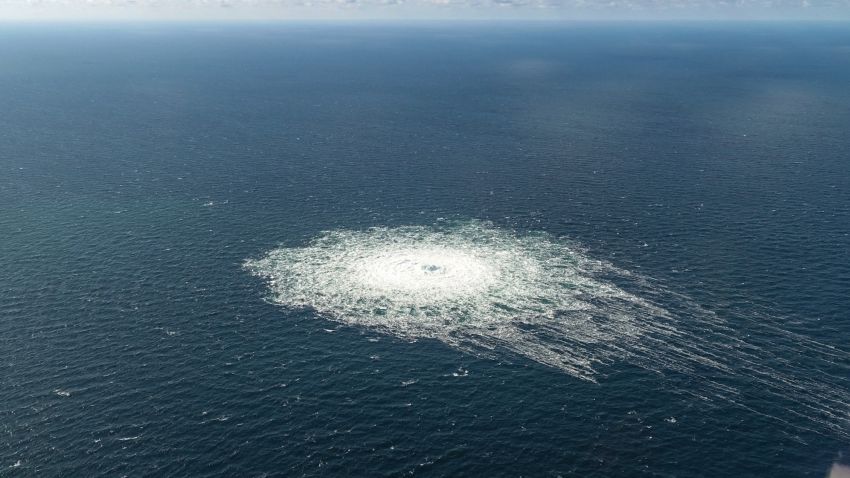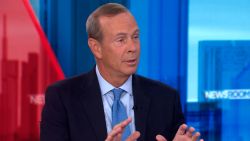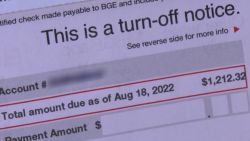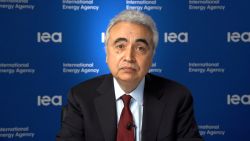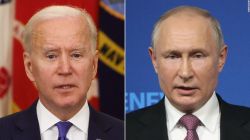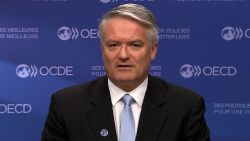Russia’s attempt to use its vast energy exports as a weapon against Europe isn’t going to plan. Moscow has slashed gas supplies in retaliation for Western sanctions, but the region has been able to amass enough for the upcoming winter.
It’s a remarkable feat: just eight months after Russian President Vladimir Putin ordered his troops into Ukraine, Europe is weaning itself off its biggest source of energy. It has reduced oil imports, with the aim of curbing Moscow’s ability to finance its war, while Russia has turned off key gas pipelines.
Russia’s share of the bloc’s natural gas imports has tumbled from 36% last October to just 9% a year later, data from research firm Wood Mackenzie shows. And EU imports of Russian crude oil have fallen by 33% ahead of a ban due to take effect in December, according to the International Energy Agency.
Europe is now well on its way to achieving its mission to end its reliance on Russian fossil fuels by 2027, and is ramping up imports from Norway and Algeria, and of liquefied natural gas (LNG) from the United States, to compensate.
Gas storage facilities are 91% full, according to Gas Infrastructure Europe, well exceeding the 80% target EU officials set for countries to reach by November.
“Putin will fail in his attempt to destabilize the basic economic order, the same way he will fail on the battlefield in Ukraine,” German economy minister Robert Habeck said at a press conference in Berlin on Wednesday.
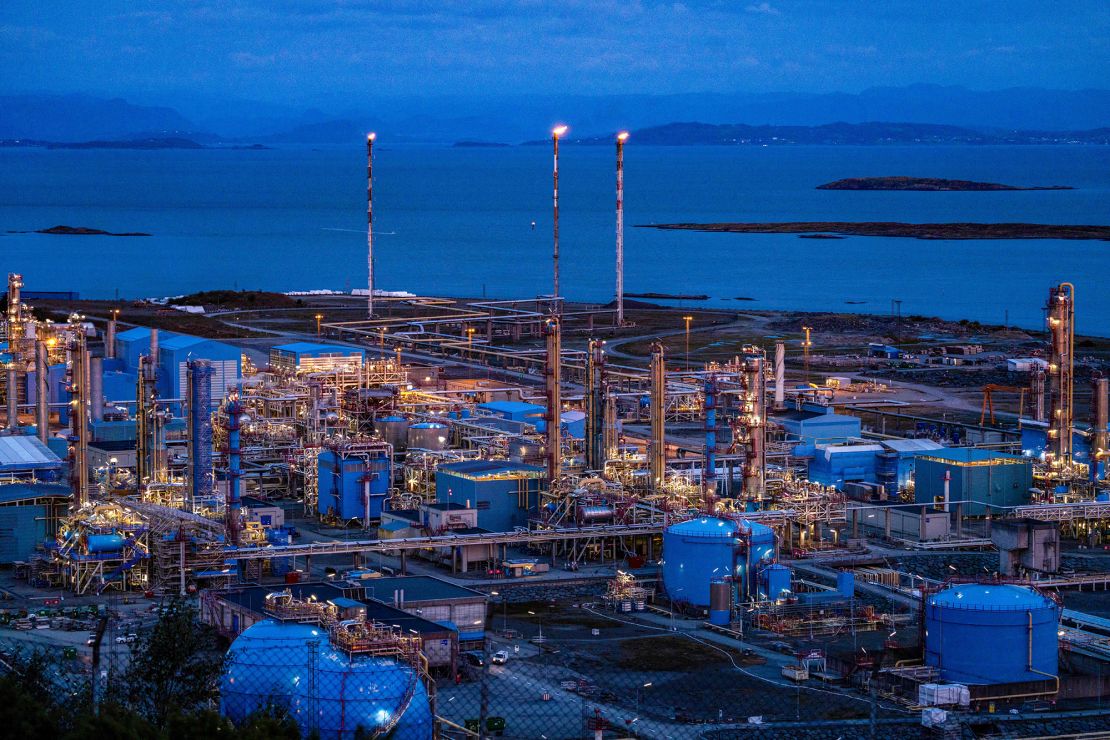
But success has come at a heavy cost to the economy: the scramble for alternative sources has sent energy prices soaring. European benchmark prices for gas have fallen sharply since peaking in late August but are still 265% higher than a year ago, piling pain on households and businesses and forcing governments to fund huge subsidies.
Germany, Europe’s manufacturing powerhouse, expects its economy to shrink by 0.4% next year.
“Dependency in a physical sense will already be gone next year,” Georg Zachmann, a senior fellow at Bruegel, a Brussels-based think tank, told CNN Business.
Yet “sensible prices in Europe are only expected in the second half of the decade,” he added.
‘Only the beginning’
Even with gas storage filled close to capacity, the region’s energy security remains precarious, with blackouts and gas rationing still possible in the months to come in the event of further supply shocks and an exceptionally cold winter.
Even with gas stores at least 90% full, the bloc is likely to face supply disruptions early next year if Russia decides to cut off remaining gas deliveries from this month, according to a July report by the International Energy Agency.
Alexei Miller, CEO of Russian state energy giant Gazprom, said on Wednesday that there was “no guarantee” that Europe would survive the winter with its current reserves. He said Germany’s stocks would only cover up to 10 weeks’ worth of demand.
Replenishing those stocks next year is already looming as Europe’s next big test.
The International Monetary Fund warned in a Tuesday report that Europe’s energy crisis was not “a transitory shock,” and while the upcoming winter would be challenging, “winter 2023 will likely be worse.”
Tomas Marzec-Manser, head of gas analytics at the Independent Commodity Intelligence Services (ICIS), told CNN Business that stores could be “exceptionally low” by the end of March if temperatures drop severely in the coming weeks.
Even if EU member states manage to curb consumption by 15% over the next five months, a target set by the European Commission in July, rebuilding stocks next summer with restricted access to cheap Russian gas would be a “bigger ask” than in 2022, said Marzec-Manser.
“This is only the beginning,” he added.
As Russian imports collapsed, Europe snapped up LNG as a replacement. Together, Europe and the United Kingdom imported almost 68% more LNG from sources other than Russia between March and September this year, compared to the same period in 2021, ICIS data shows.
But global competition for LNG is already fierce, and could become even more intense if — as expected — China’s economy starts to pick up a bit more speed again next year.
“A come-back of Chinese LNG demand can also cause challenges for Europe’s ability to attract LNG cargoes next year,” Sindre Knutsson, senior vice president of gas and LNG at Rystad Energy, a research firm, told CNN Business.
Oil supply could also be tight, despite expectations that global demand growth will slow next year as economies slow. The Organization of the Petroleum Exporting Countries and its allies (OPEC+) said last week that they would slash oil production by 2 million barrels per day starting in November.
Florian Thaler, CEO of OilX, an oil data company, told CNN Business that in the past, when global oil prices were close to $100, as they are now, the United States would usually step up production “at full throttle”. That is not currently the case, he said.
Unsustainable
European governments have already committed at least €553 billion ($537 billion) to help protect households and businesses against painful rises in energy bills, as well as other living costs, according to an analysis by Bruegel. Germany, the bloc’s biggest economy, is prepared to borrow as much as €200 billion ($194 billion) to bring down the price of gas.
But such programs of support are not sustainable if wholesale prices remain high.
“Governments should work with the worst-case scenario hypothesis of energy prices remaining at consistently higher levels than before this crisis for the next 2 to 4 years,” Giovanni Sgaravatti, a research analyst at Bruegel told CNN Business.
European gas futures prices are currently about eight times higher than benchmark US prices, according to Bruegel. Sgaravatti said that European prices were expected to stabilize at 2.5 times the US price from 2026.
“Adopting policies that prevent the pass-through of high energy prices to consumers is an expensive gamble that is doomed to fail if wholesale energy prices will stay high in the future,” he added.
Renewable energy ‘on hold’
Europe’s desperate scramble to replace Russian energy has also come at a cost to the environment, while accelerating its plans to ditch fossil fuels altogether in the long term.
Carlos Torres Diaz, head of power analysis at Rystad Energy, told CNN business that Europe’s energy transition “has been put on hold” as it prioritizes energy security.
Fears of widespread energy shortages have led some countries to fire up old power stations that burn coal, the most polluting of all fossil fuels. Hard coal power generation jumped nearly 15% between March and September this year compared to the same period in 2021, according to ICIS.
But the energy crisis has focused minds across the bloc. In May, the European Commission unveiled its €210 billion ($204 billion) “REPowerEU” plan to wean itself off Russian imports, which EU Commission President Ursula von der Leyen said would “speedcharge” the continent’s transition to renewables.
The European Union is now aiming for renewables to account for 45% of the bloc’s energy by the end of the decade, up from 40%.
“These sources of energy also help reduce the dependency on energy imports,” Torres Diaz added.
— Mark Thompson, Nadine Schmidt, Sharon Braithwaite, Uliana Pavlova and Alex Hardie contributed reporting.
